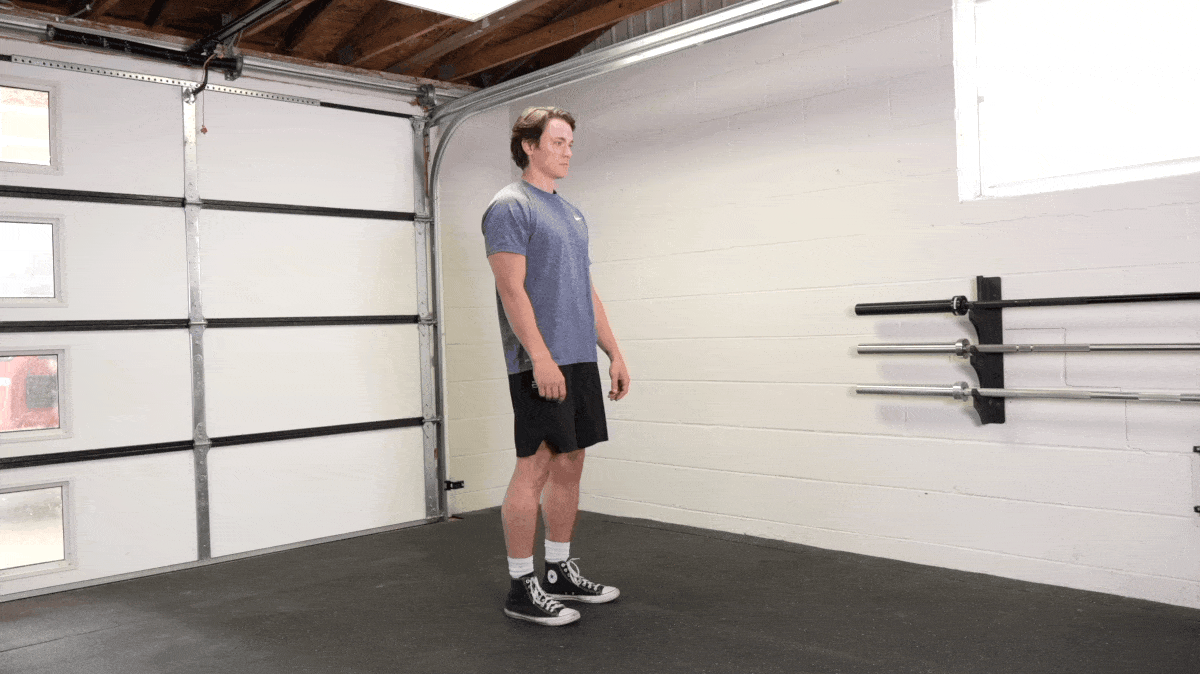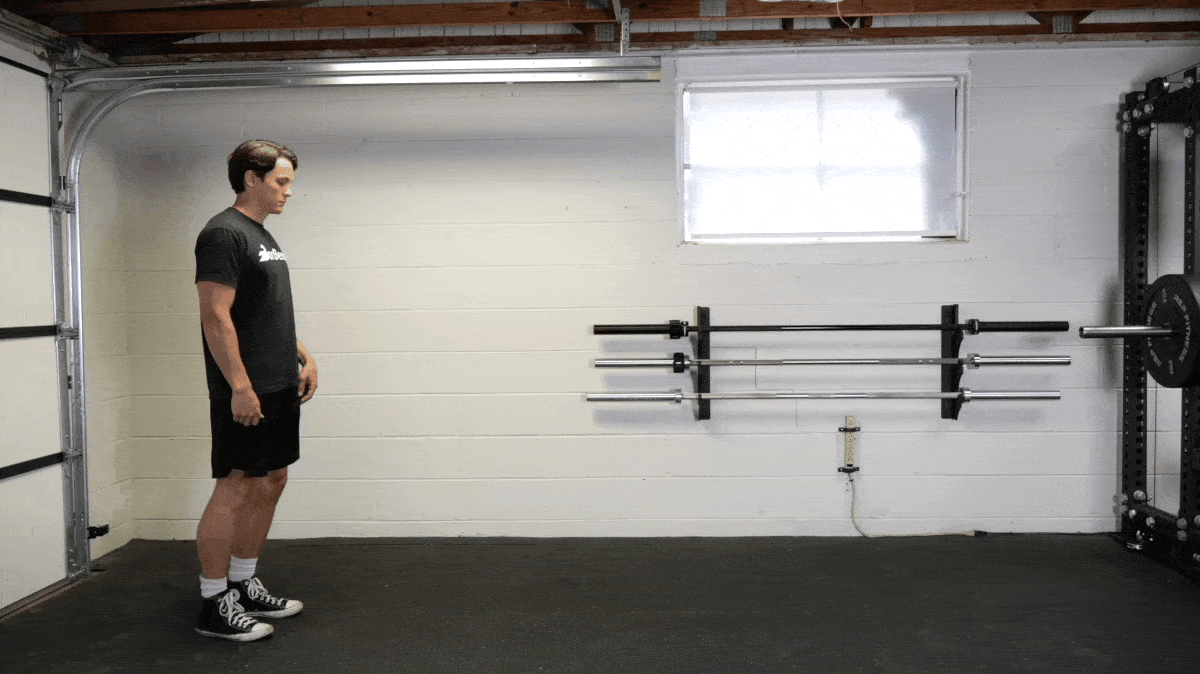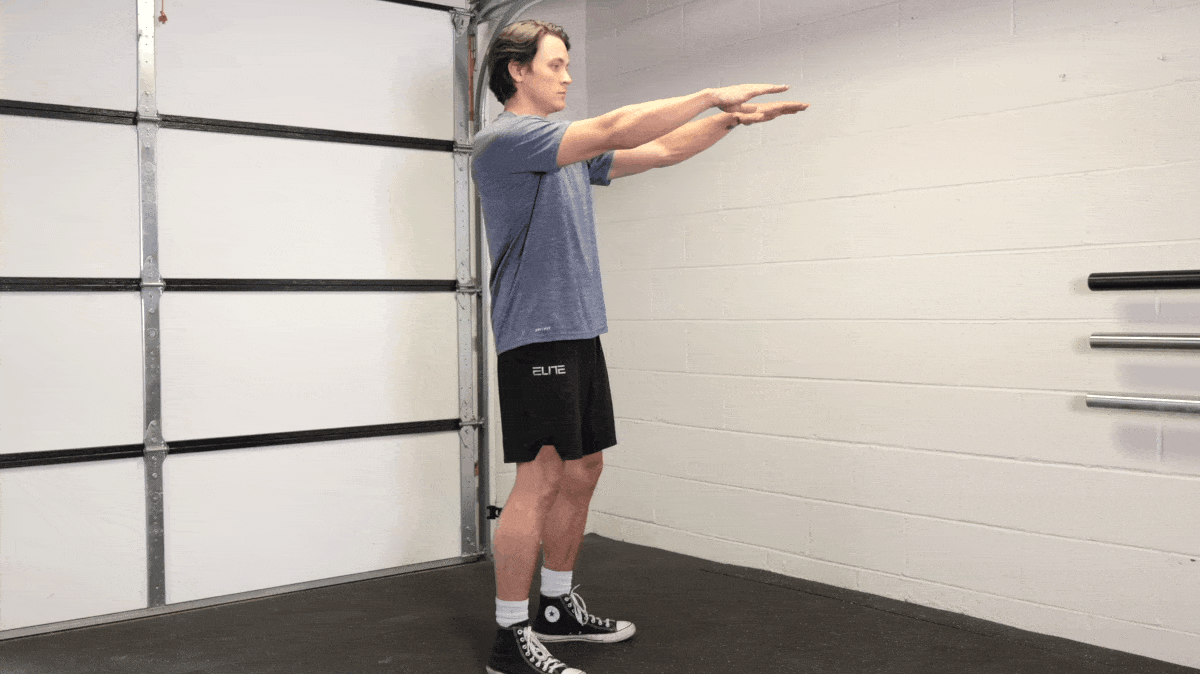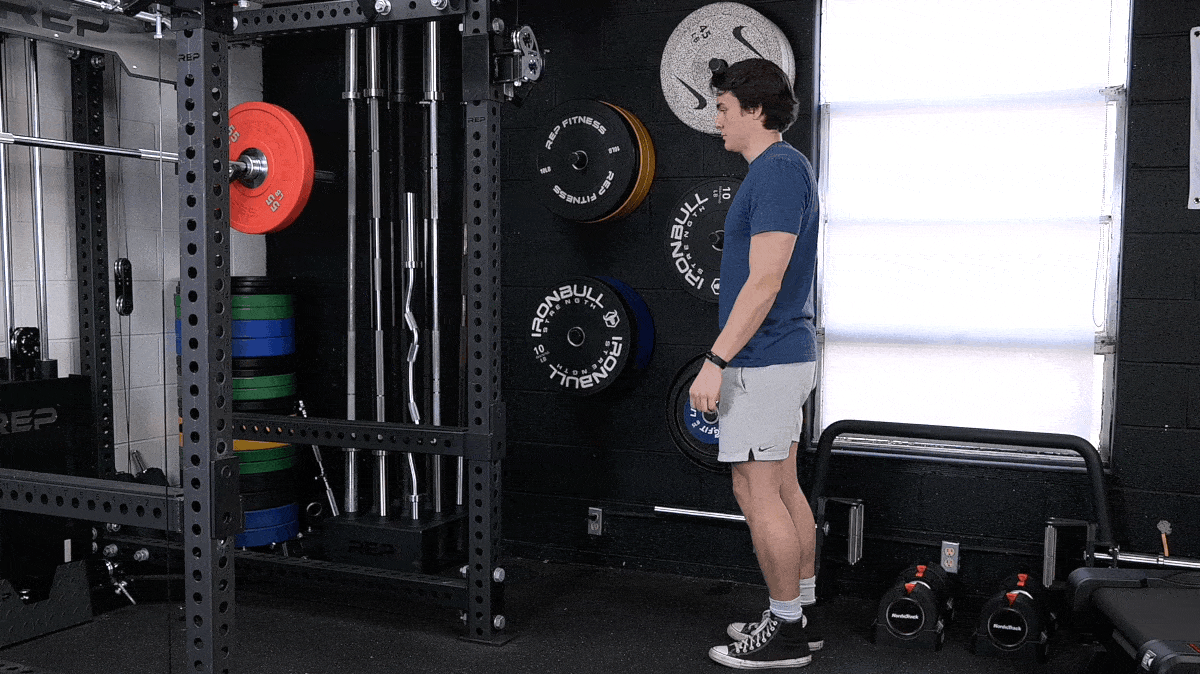Few training routines are as romanticized in popular culture as boxing workouts. Who among the gym rats isn’t inspired to pick up a jump rope after checking out Creed or Rocky? Boxers remind lifters that hefting around barbells isn’t the only way to get strong and look it.
Fortunately, you don’t have to be a pro or a coach — we talked to one for you — to implement boxing-style workouts into your regimen. Keep reading to learn how to take on the best boxing workouts and program them alongside your general strength training.
Three Boxing Workouts to Try
Below, you’ll find three 30-minute boxing workouts that don’t pull their punches. They include classic boxing drills — everything from heavy bag work and jumping rope to bodyweight exercises designed to jack up your heart rate and pump up your muscles.
“We typically separate workouts by intensity levels, or explosive techniques one day and cardio technique the next day,” says Winkeljohn. “We go lighter on the days following explosive training, but with increased reps. I like to set exercises up and arrange them in three-minute rounds, like a boxing match. That way, fighters get that mental timeframe into their heads.”
- Boxing Workout for Explosive Power
- Boxing Workout for Cardiovascular Conditioning
- Boxing Workout for Lower Body Endurance
Boxing Workout for Explosive Power
Winkeljohn’s formula for building explosive power is alternating explosive techniques with jumping rope and other cardiovascular training. Two of his favorite power-builders are heavy bag work and rotational throws with a medicine ball (which helps add power to a fighter’s hook). Winkeljohn also suggests performing shadowboxing while holding light dumbbells (one to five pounds) and then dropping the weights to throw snappier shots.

[Read More: 7 Lessons for Powerlifters Taken From a Boxing Class]
- Round One: Moderate-intensity jogging as a warm-up
- Round Two: Shadowboxing w/ resistance bands
- Round Three: Jumping rope
- Round Four: One minute each of: walking lunges, push-ups, crunches
- Round Five: Heavy bag work (suggested combo of jab, jab, cross)
- Round Six: Heavy bag work (Suggested combo of jab, cross, jab, uppercut)
- Round Seven: One minute each of: burpees, squats, jumping Jacks
- Round Eight: Medicine ball wall throws
- Round Nine: Shadowboxing (two minutes holding light dumbbells; one minute without weights)
- Round 10: Low-intensity jogging
Boxing Workout for Cardiovascular Conditioning
Winkeljohn describes this as a pure body conditioning and endurance day. You’ll still shadowbox, sticking and moving, but you’re lightening the load and focusing on body mechanics. Complete as many rounds as you would during explosive training, but at a far lower intensity level.

[Read More: The Best Knee Sleeves on the Market (Personally Tested)]
- Round One: Low-intensity jumping jacks as a warm-up
- Round Two: Shadowboxing (any combination of punches)
- Round Three: Jumping rope
- Round Four: One minute each of: walking lunges, push-ups, crunches
- Round Five: Heavy bag work (suggested combo of hook, hook, uppercut)
- Round Six: Heavy bag work (suggested combo of jab, cross, hook, uppercut)
- Round Seven: One minute each of: jumping Jacks, bodyweight squats, burpees
- Round Eight: Jumping rope
- Round Nine: Shadowboxing (any combination of punches)
- Round 10: Low-intensity jumping jacks
Boxing Workout for Lower Body Endurance
Winkeljohn stresses the importance of maintaining a durable set of legs so that you can remain active in the later rounds of fights. To that end, he advises that you complete a lot of sprints — ideally in hilly or mountainous locations — and do a ton of rope jumping. He also encourages you to complete a lot of calisthenics training that will help forge an indestructible set of legs.

- Round One: Moderate-intensity rope jumping as a warm-up
- Round Two: Sprints (20 seconds sprinting, 20 seconds walking)
- Round Three: Jumping rope
- Round Four: One minute each of: burpees, bodyweight squats, walking lunges
- Round Five: Heavy bag work (suggested combo of jab, cross, jab, cross)
- Round Six: Heavy bag work (suggested combo of jab, cross, hook, uppercut)
- Round Seven: One minute each of: bodyweight squats, jumping Jacks, burpees
- Round Eight: Jumping Rope
- Round Nine: Shadowboxing (any combination of punches)
- Round 10: Low-intensity jogging
The Punches
When you’re shadowboxing, you’ll move around in your boxing stance, punching the air as if you are sparring with an imaginary opponent. Don’t let your guard down here — just because no one’s punching back doesn’t mean you should be any less focused.
Working on a heavy bag means you’ll be striking a dedicated punching bag with protected hands.
To assume a proper boxing stance, you’ll want your feet to be shoulder-width apart, with the foot of your non-dominant hand positioned a full step behind your lead foot. This means if you are right-handed, your left foot will be a full step ahead of your right foot. If you’re left-handed, your feet will switch positions.
Remember that your power and rotations are going to come from your hips. Be steady but light on your feet, ready to pivot with your punches.
Here are the punches you’ll need to know:
- Jab: A straight punch delivered with your non-dominant hand.
“To throw a proper jab, you need to stay loose,” adds Winkeljohn. “That way, you get a good whipping action. Your core goes forward first, and then you get an extension through your arm as it whips forward.”
- Cross: A straight punch delivered with your dominant hand as your body rotates forward. Pivot on your back foot here, with your back knee, hip, and torso driving with the punch.
“With a cross, you need to think about your stance and foundation first,” says Winkeljohn. “You need to use your body to its full potential where you get your hips and lower part of your abdominals spinning first, and then your upper core spins and you retract your front hand aggressively so that it will help the rotation as your other hand follows through with the punch.”
- Hook: A looping outside-in punch thrown with your non-dominant hand. You’ll want to similarly pivot your foot and hip here.
“When you throw a hook, you have to think in terms of circles,” states Winkeljohn. “You’re rotating your body toward the center, where your core spins first, and then your arm and fist are sort of following along behind it.”
- Uppercut: An upward punch thrown with a supinated hand position.
“Ideally, you would start from a lower position, and begin by driving your body upward,” explains Winkeljohn. “When you deliver the punch, you use a whipping action when attacking the head, and a driving action when attacking the body or liver.”
To complete these workouts as written, you’ll also need access to the following pieces of training equipment and paraphernalia:
- Punching Bag (or Heavy Bag)
- Boxing Gloves (8 oz to 16 oz)
- Jump Rope
Without access to gloves and a bag, you can modify by shadowboxing only. Without a jump rope, you can perform the hopping motions and the movements with your wrists to simulate the effort.
How to Schedule Boxing With Your Lifting Workouts
The frequency with which you schedule your boxing training around your weight-lifting workouts depends upon the duration and intensity of your training sessions. If your primary focus is building muscle or increasing strength, Winkeljohn suggests that you scale back the intensity of your boxing and use it as light cardio.
[Read More: Can You Use Olympic Weightlifting to Get Better at Boxing?]
“Most of our guys are usually working out a good four or five days a week during the off-season, and two workouts a day,” says Winkeljohn. “One could be a sparring workout, or a striking type of workout, or a ring workout, and the other one would be for conditioning. One day of that might be more cardio, and the next day might be more back work or sprint type activities. They mix it up to not break down their muscle tissue too much with the intense workouts, but the easy workouts can be done daily.”
The Benefits of Boxing Workouts
A well-structured boxing workout will dramatically change your body, from the bottom to the top. Boxing can be a full-body workout routine, whether you engage in it at home or at a dedicated boxing gym.
Effective Cardio
Even short boxing workouts will rapidly elevate your heart rate while training your aerobic and anaerobic energy systems. (1) Winkeljohn says that diligent work effectively prepares your body for the fatigue associated with self-defense.
“Everything comes down to intensity level, and when our guys are preparing for fights, they take everything to another level,” says Winkeljohn. “The thing is, even at that light intensity level, you’re preparing your body to fight, and it’s still a fantastic workout for most people.”
A More Chiseled Upper Body
There is a reason why professional fighters are credited with possessing some of the most sculpted, low-body-fat physiques on the planet. Even if you forego the use of any additional equipment like dumbbells, Winkeljohn believes the act of boxing alone can dramatically improve your upper-body strength. He says this is because the repetitive motion of punching goes a long way toward shaping combat-ready muscles.
“People who box get incredible lat and shoulder workouts,” explains Winkeljohn. “Their backs get very strong, and a lot of it is from shadowboxing because of that retraction; the movement of your fist is not always going forward. Most fighters tend to lift weights in a way that helps them move things forward, but when you have to pull things back because you have to retract that punch, I think that’s huge and keeps your body in balance quite a bit.”
[Read More: The Best Arm Exercises to Add to Your Workout Routine]
Note that boxing-style workouts are intense and therefore help you burn more calories. That chiseled look that many fighters possess results from burning many calories consistently, which helps reduce their body fat. And less body fat means more muscle definition. It’s also important to mention that keeping your calories in check is necessary if your goal is to get leaner. If you’re eating calorically dense foods often, it’s much harder to see weight- and body fat-related results.
Full-Body Functional Power
Mastering the mechanics of the punching motion teaches you how to harness and unleash power in a very precise way. You’ll gather power starting with your lower body, distribute it through your muscles, and project it into your target. Winkeljohn says he specializes in helping his trainees deliver all that energy to a specific location through the cooperation of several muscle groups.
“If you yank your front hand back and extend your other arm, you’re already increasing velocity because you’re making a circle around your spine,” Winkeljohn says. “That has got to be preceded with your hips spinning, which has got to be preceded with pushing off the ground to get your hips to spin.
[Read More: The 6 Best Rotational Strength Exercises Worth Adding to Your Workout]
A punch involves putting all those things together with proper execution, technique, and turning your knuckles over. All of the energy is coming up from the ground, through your hips, through your arm, and out of the other end through your fist. That’s how you deliver the most powerful punch.”
Durable Calves
One body part undeniably more active than a boxer’s fists is the calves. While a fighter might throw hundreds of punches during a round, Winkeljohn points out how their legs are enduring a far greater number of muscle contractions from all of their stabilizing movement. In other words, it’s impossible to box for very long without developing calf muscles capable of standing up to pressure.

[Read More: Try These 8 Stretches to Improve Ankle Mobility]
“You need to be able to move your feet quickly, because you’re moving them thousands and thousands of times in a fight, and you have to do it without getting tired,” Winkeljohn says. “It’s very important to have that kind of conditioning. The last thing you want to do is get tired because you want to move quickly toward your opponent, away from your opponent, or at an angle. If you have your legs underneath you, you’re that much better of a fighter, so I highly suggest jumping rope or something similar for any of the fighting arts.”
Excellent Coordination
A functional boxing workout teaches you to throw an arsenal of punches from several different postures — while you’re moving forward, backward, sideways, or standing completely stationary. It also requires you to do so while ducking, dodging, countering, and evading. Winkeljohn insists that training all of these elements will do a huge favor to your coordination.
[Read More: The 12 Best Mobility Exercises From a Physical Therapist (+ Tips)]
“There’s just no doubt about the coordination benefits of boxing, including the jump rope, the movement, and the footwork drills,” elaborates Winkeljohn. “I think that helps people with their movement and their mobility. They have better balance and better coordination with everything they’re doing because they learn how to move their feet quickly.”
The Best of Both Worlds
It probably wouldn’t be wise to take up boxing solely for conditioning purposes and then think that you’re prepared to step into the ring with a trained fighter. However, if you’re interested in being conditioned like a boxer, then the best boxing workouts can provide you with all of the benefits without any of the bruises.
FAQs
If you still have questions about what a boxing workout can accomplish for you, we provide some answers for you here:
If you actively box for 30 minutes, you are engaging in the time equivalent of a 10-round professional boxing match with no breaks. Even at a moderate intensity level, 30 minutes of constant boxing movement is a very challenging workout for most people, regardless of fitness level. Boxing workouts of that duration were shown to reduce body fat percentages in test subjects far faster than walking. (2)
There are plenty of ways to build strength during boxing training. This includes interspersing bodyweight strength exercises like push-ups, squats, and lunges in between the jabs, uppercuts, crosses, and hooks. However, punching with intensity alone is sufficient to build noticeable muscles in some cases.
The easiest way to get a boxer’s physique is to train like a boxer. While this primarily involves throwing a lot of punches — either into the air, or into focus mitts and heavy bags — it often includes weight training. This means additional exercises are often tied into boxing training, including squats and lunges for the lower body, and push and pull workouts for the upper body.
References
- Bruzas V, Venckunas T, Kamandulis S, Snieckus A, Mockus P, Stasiulis A. Metabolic and physiological demands of 3×3-min-round boxing fights in highly trained amateur boxers. J Sports Med Phys Fitness. 2023 May;63(5):623-629.
- Cheema BS, Davies TB, Stewart M, Papalia S, Atlantis E. The feasibility and effectiveness of high-intensity boxing training versus moderate-intensity brisk walking in adults with abdominal obesity: a pilot study. BMC Sports Sci Med Rehabil. 2015 Jan 16;7:3.
Featured Image: Shutter z / Shutterstock
The post The Best Boxing Workouts According to a World Champion Coach appeared first on BarBend.

